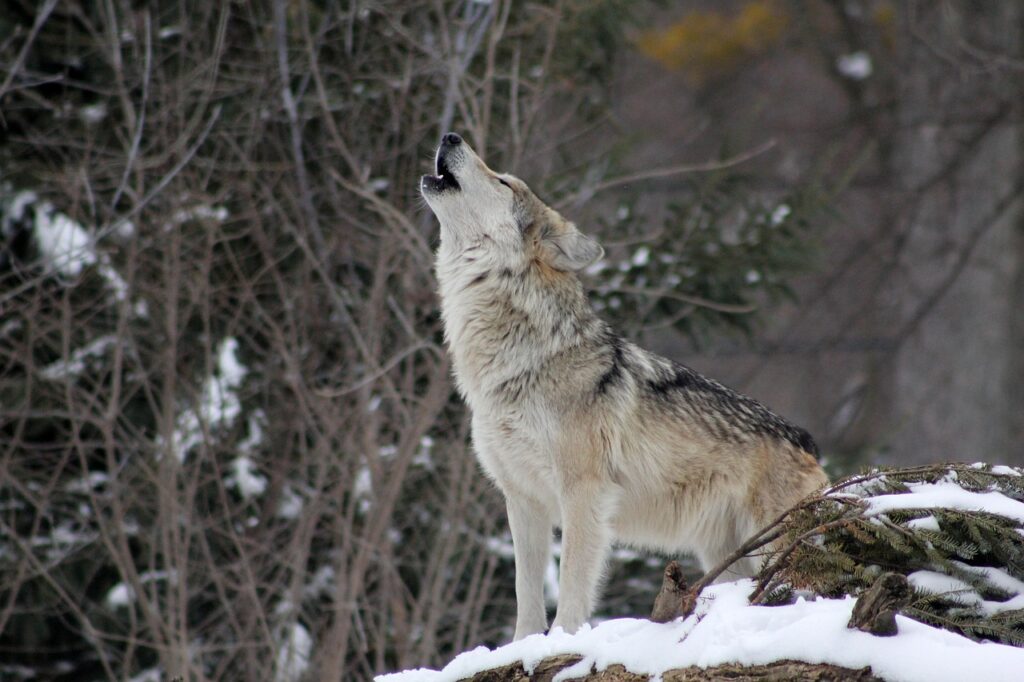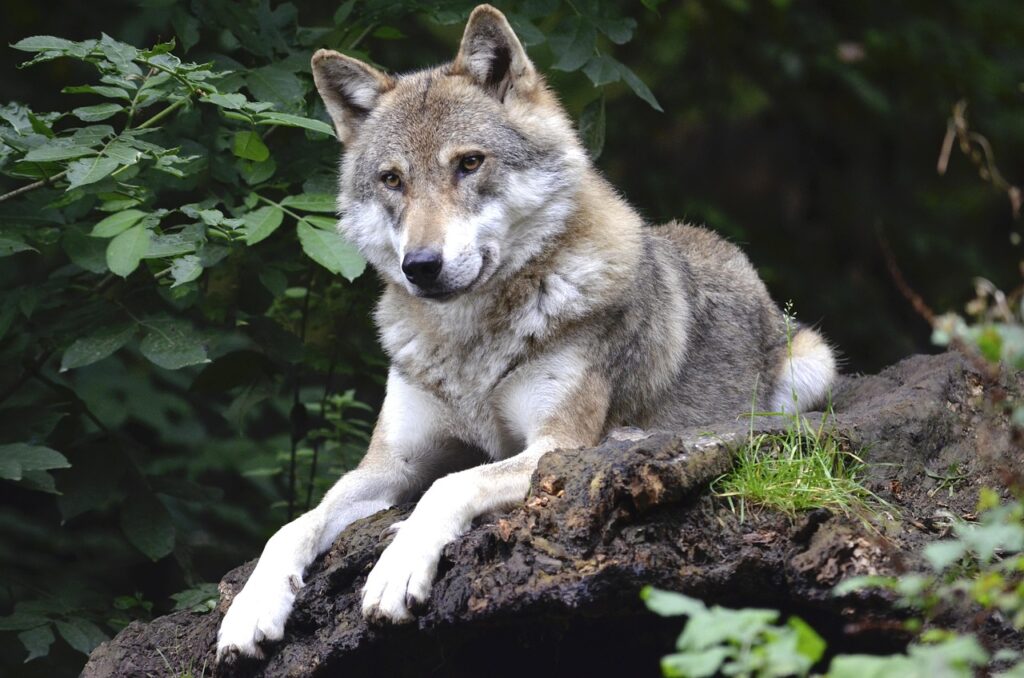Wolf (Varg)



Characteristics:
The wolf is a large wild member of the dog family with a powerful build. Body length 100–150 cm, shoulder height 60–90 cm, and weight 30–50 kg (males are slightly larger than females). The coat is grey-brown to grey, often mixed with black and beige tones. The tail is bushy and carried straight down, unlike domestic dogs which often carry their tails upward. The head is broad with a long muzzle and erect, triangular ears.
Habitat:
In Sweden, wolves are found mainly in central regions, especially Värmland, Dalarna, Örebro, Gävleborg, and northern Västmanland, though they are slowly spreading both northward and southward. Wolves prefer large forested areas with abundant prey, particularly moose.
Behaviour:
The wolf is a social predator that lives in packs (family groups), consisting of a dominant pair (the alpha pair) and their offspring. The pack holds a territory, marked by scent, scat, and howling.
Wolves communicate through scent, body language, and howling, which helps maintain contact between pack members and mark territory. They are most active at dusk and night and can travel great distances.
Diet:
Wolves are carnivorous, feeding primarily on moose, roe deer, red deer, and wild boar, but they also take hares, birds and small mammals. They often hunt cooperatively, using endurance and teamwork to bring down large prey.
Reproduction:
Mating occurs in February–March. After a gestation period of about 63 days, the female gives birth to 4–6 pups in May, in a den located in sheltered terrain. The pups nurse for 6–8 weeks and begin following the pack during late summer. They usually remain with the family for 1–2 years before dispersing.
Tracks and signs:
- Tracks: Four toes with clear claw marks. The front paw print measures about 10–12 cm, hind paw slightly smaller. Tracks typically appear in a straight line, unlike domestic dogs which tend to wander.
- Droppings (scat): Similar to that of a large dog but often darker, longer (up to 20 cm), and contains hair, bones, or hoof remains.
- Howling: Used for long-distance communication, especially at dusk and dawn.
Distribution:
The wolf is found across much of the Northern Hemisphere. The Swedish population descends from wolves that immigrated from Finland and Russia. The population is estimated at around 450–550 individuals (as of the 2020s). Wolves are protected by law, but may be subject to licensed or protective hunting under special regulations.
Hunting:
The wolf is normally protected, but licensed hunting can be approved by the county administrative board to regulate the population. Hunting is carried out under strict control using class 1 rifles and requires special permits.
Common methods include hounds or ambush hunting near travel routes.
Firearm class (Sweden):
Hunting wolves requires a class 1 rifle.
Think for the hunting exam:
- Lives in packs with a clear social structure.
- Hunts mainly moose and roe deer.
- Tracks straight, larger than those of domestic dogs.
- Mating in February–March, pups born in May.
- Protected species — hunting only under licensed or protective hunts.
- Hunted with class 1 rifle.
